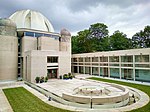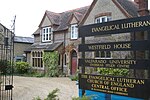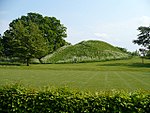The Women's Art Collection

The Women's Art Collection (before 2022, the New Hall Art Collection) is a permanent collection of modern and contemporary art by women artists, at Murray Edwards College, Cambridge (previously New Hall), England. It includes over 600 works by artists of international renown and is now considered to be one of the largest and most significant collections of contemporary art by women in the world. Paintings, prints, and sculpture are displayed throughout Murray Edwards College in Cambridge. The College has no designated gallery and the works are displayed throughout its buildings and grounds. The modernist College buildings were completed in 1965 by Chamberlain, Powell and Bon and are Grade II* listed. Many of the works are on display to visitors and a self-guided tour is available from the Porters' Lodge. The aim of the Women’s Art Collection is "to champion artists who identify as women, to give them visibility and a voice, and promote their work within the ethos of an academic college for women dedicated to gender equality."
Excerpt from the Wikipedia article The Women's Art Collection (License: CC BY-SA 3.0, Authors, Images).The Women's Art Collection
Huntingdon Road, Cambridge
Geographical coordinates (GPS) Address Website Nearby Places Show on map
Geographical coordinates (GPS)
| Latitude | Longitude |
|---|---|
| N 52.2142 ° | E 0.1085 ° |
Address
Murray Edwards College (University of Cambridge)
Huntingdon Road
CB3 0DF Cambridge
England, United Kingdom
Open on Google Maps










